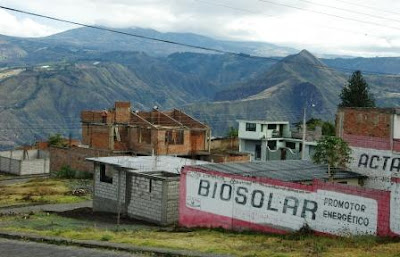I haven’t been to South America previously, although I have traveled to Latin American destinations including Mexico , Costa Rica , and Puerto Rico . Besides a strong suspicion that I would need to slow down my daily pace, I am not sure what to expect. My friends that have visited Ecuador Darwin
A poster in the upstairs hallway of a hostel in Quito.
The diversity of birds is one major reason people travel to Ecuador.
On the airplane from Newark, I started reading The Ecuador Reader (Carlos de la Torre and Steve Striffler, editors, Duke University Press, 2008). They begin by discussing the relative lack of identity of Ecuador Ecuador is overshadowed by Peru to the south (characterized as a source of raw coca or the home to Machu Picchu ) and Columbia
From my brief discussions with Sue and Paul, my destination of Pimampiro is none of the above. I had seen some of the pictures on their Mountains of Hope website (http://www.mtnsofhope.org/index.html) and could tell that I would be in the northern highlands region of the country – in the Andes . Not the lush tropical rainforests of Costa Rica Quito

A view from Pimampiro looking west.
Looking north.
Agriculture is an important part of life. In the picture below to the right,
the tops of greenhouses (for tomatoes) are seen. The remnant clouds of the
rain showers overnight made for a dramatic backdrop.
A typical street in town.






No comments:
Post a Comment